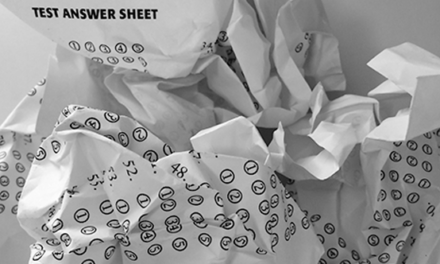School portrait photos in the spring and fall are a long-standing tradition. Although no precise record exists, the first portrait of a class of schoolchildren was at least 100 years ago. But school photos today are not what they used to be. For one thing, school portrait companies offer opportunities for families to put their child’s image on everything from blankets, plates, keychains, iPhone cases, and socks, to name just a few items. But there’s another, more serious difference. School district after school district hires school photo companies that offer “retouching” services.
These retouching services go beyond the understandable practice of digitally getting rid of the glare from someone’s glasses. They include digitally whitening teeth, “evening” skin tone, and getting rid of “blemishes,” including freckles.
The practice of touching up photos isn’t new, of course. But it used to be rare for school photos. Now it’s ubiquitous. It’s available not only for image-conscious teenagers; it’s also being sold to parents of elementary and even preschool children. What’s next? Offering it to expectant parents as part of their prenatal ultrasound?
Few if any educators or parents would call a student “ugly” or even “not good-looking enough.” Yet, by offering these options, schools are subtly signaling to students that their photos may not look good enough to show in public, not even to their own families. When the filter choice is checked, students may believe that their photos must be fixed up to be acceptable.
Proponents will say that no one is requiring students to have their photos retouched. It is an option that customers can choose. So are nose jobs. Would the school invite a plastic surgeon to set up a booth in the hallway offering them to kids?
Proponents will say that most, if not all, school photography companies offer this service — it’s the new normal. Smoking on school grounds was the norm for decades, too, but we know how harmful that practice was. Similarly, we know that some types of social media are harming the mental health of our students as they strive to look “perfect” on these platforms.
Proponents will say that parents and kids expect it. Maybe so, but they can edit the photos all they want after they purchase them. At least in that case, the school isn’t sending the message that students’ natural faces aren’t good enough.
Vendors are not going to stop offering this service, but that doesn’t mean the school administration has to buy it. When negotiating, the school should be very clear that retouching will not be offered and should not be mentioned in any promotional materials given to the kids at school or their parents.
If the school must allow the touch-up choice, stipulate that it can’t be anything a child would notice. Taking the glare off the glasses is OK. Removing a fly from a forehead is fine. Making kids feel like they don’t look good enough — as they really are — for a school photo is not OK.
Unfortunately, some parents are all for this sort of “fixing up” of their children. But those who are not — still the majority, I pray — should speak up, preferably before a vendor is chosen. Do a little homework and find a vendor you can suggest to the school.
Children’s self-images are being attacked nonstop, mostly so someone can sell something. There is no excuse for schools to pile on.
This article appears in the May 2023 issue of Kappan, Vol. 104, No. 8, p. 66.
ABOUT THE AUTHOR

Todd L. Pittinsky
Todd L. Pittinsky is a professor at Stony Brook University and a senior distinguished fellow of the Holocaust Memorial and Tolerance Center on Long Island in New York. He is the author, with Barbara Kellerman, of Leaders Who Lust.











